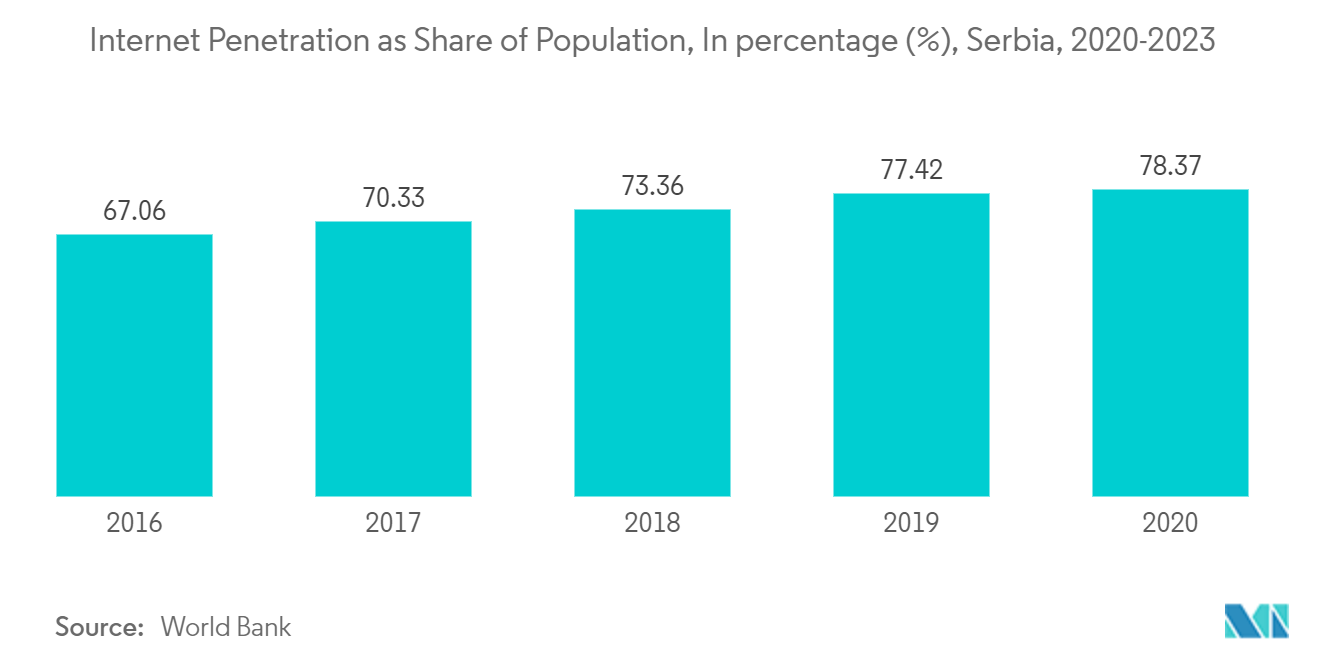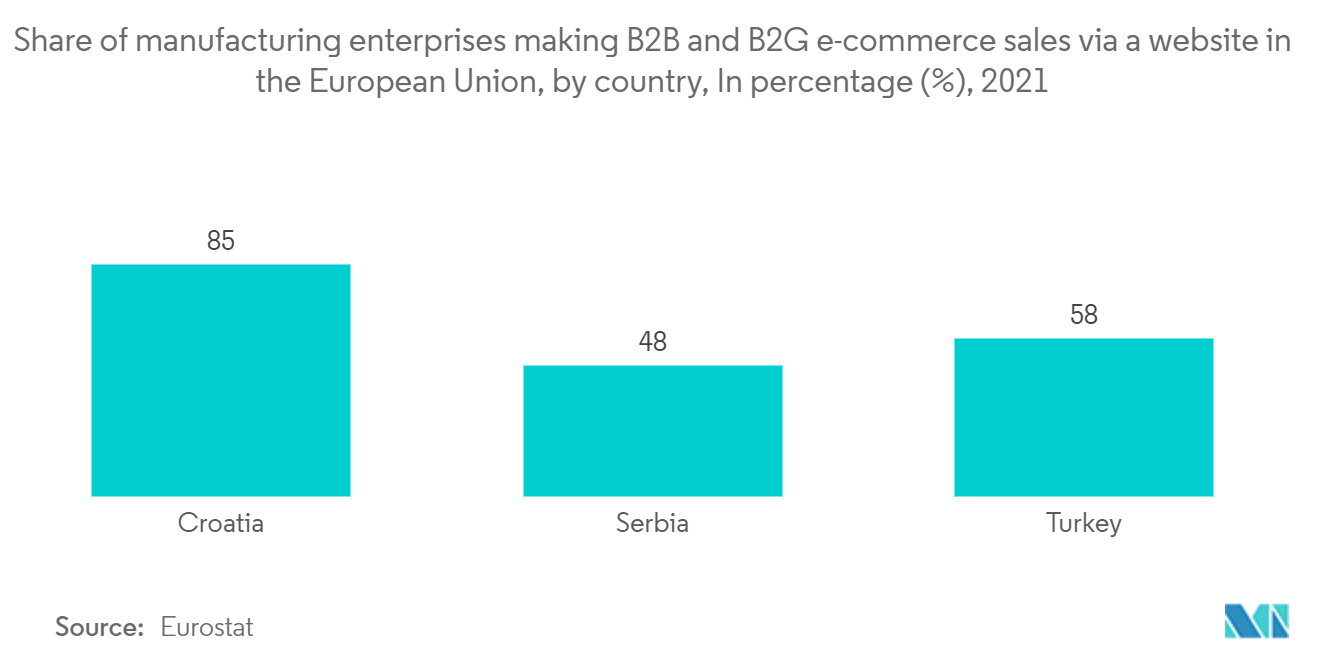Market Trends of Serbia E-commerce Industry
This section covers the major market trends shaping the Serbia E-commerce Market according to our research experts:
Internet usage to drive the e-commerce market in the country
The intensive development of digital technologies, the shorter lifecycle of products, the internet, social media, smartphones, and educated, connected, and informed customers had transferred the communications and the whole business online. The internet and social networks have enabled people to interact globally with minimal effort but made the battle for attaining and sustaining the competitive advantage complicated and uncompromising. Also, shopping has drastically changed due to the usage of digital technologies.
Serbia's digital economy is growing, and ICT is becoming the most prosperous part of the economy, but most initiatives come from the private sector. Broadband is still in its infancy, but Serbia is one of the world's leading mobile phone providers. Internet speeds in Serbia are much slower than in Europe and also more expensive per megabyte of data transfer.
Moreover, due to poor infrastructure, most of the ICT businesses are located in the major cities of Belgrade, Novi Sad, and Niš. Serbia has many start-ups in the region, but its survival rate is low. In the areas of research, pre-seed, and seed stages, businesses lack continuous and substantive financial support. Since COVID-19, this has been rising with more people adopting e-commerce solutions.
The development of Serbian telecommunications almost corresponds to the European Union average. With an average download speed of 50.67 megabits/sec for fixed-line broadband internet, Serbia is ranked 69th in international comparison. On the mobile internet, tablets, and smartphones, Serbia ranks 44th with a download speed of 43.05 Mbit/s. These changes in internet speeds leverage the demand and development of the internet in the country.
E-commerce players with products and existing e-commerce processes grew mainly during the COVID-19 pandemic in 2020. Despite the re-opening of malls, there is still higher spending on digital channels. Grocery shopping online was found predominantly within the bigger cities, and these stores grew, but interestingly, only a limited percentage of overall grocery market sales are online. They had logistics and capacity problems, but many had their delivery and were quick to rise to the challenge. However, the increasing internet consumption in the country has positively influenced the use of e-commerce platforms.

Online Shopping is leveraging the Fashion E-commerce market in the country
The fashion industry has been in focus with the common population largely investing in the online shopping of various clothes and apparel in the country. A significant number of customers bought clothes and sports products, closely followed by online sports equipment and home appliances.
In October 2021, several fashion brands left Asia, and their production expanded to Serbia and Croatia. The Italian company Benetton has already developed output in Croatia, Serbia, and other regions and plans to split its production capacity between Asia. Due to the shortage of ships, the average delivery time from Asia has increased from 4 months to 5 months. As a result, the company plans to increase production in Serbia, and more regions, working with suppliers in Egypt and Turkey.
Also, in July 2020, United Group opened a new chapter in business with the launch of the local e-commerce online shopping platform shoppster.com for Serbian shoppers. Initially, Shoppster offered over 20 popular product categories, including electronics, household items, gardens, tools, fashion, children's items, kitchen items, etc., with a range of products to meet the needs of discerning customers. Continue to expand intensively.
Further, in collaboration with the Ministry of Finance - Customs Administration, the national postal service, Posta Srbije created two services for its customers PostExport and PostPak - to facilitate the export of goods and make better conditions for cross-border eCommerce expansion. In addition, there are several private logistics service providers.
According to Serbia's Trade Development Strategy 2020, some of the main goals include the development of new trade and trade network structures, internationalization of trade, and intensifying competition. This strategy further aims to support small and medium enterprises, e-commerce development, consumer protection, and harmonization of the framework of Serbia with the EU. This helps the growth of the country's fashion industry and other retail businesses.


